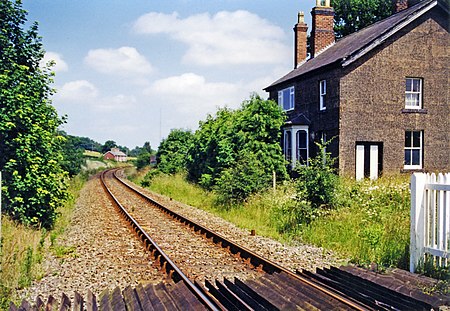Hanwood railway station
Disused railway stations in ShropshireFormer Great Western Railway stationsFormer London and North Western Railway stationsPages with no open date in Infobox stationRailway stations in Great Britain closed in 1960 ... and 2 more
Railway stations in Great Britain opened in 1861West Midlands (region) railway station stubs

Hanwood railway station was a station in Hanwood, Shropshire, England. The station was opened in 1861 and closed to passengers in 1960, and to goods traffic in 1964.
Excerpt from the Wikipedia article Hanwood railway station (License: CC BY-SA 3.0, Authors, Images).Hanwood railway station
A488,
Geographical coordinates (GPS) Address Nearby Places Show on map
Geographical coordinates (GPS)
| Latitude | Longitude |
|---|---|
| N 52.6815 ° | E -2.8284 ° |
Address
A488
SY5 8LR , Great Hanwood
England, United Kingdom
Open on Google Maps









